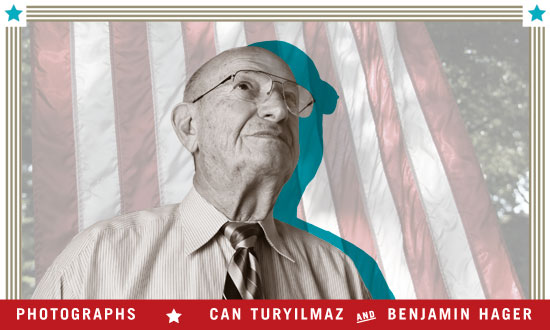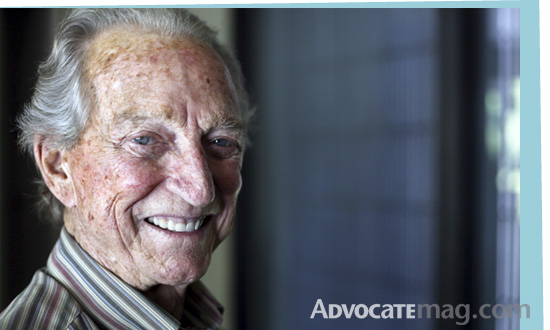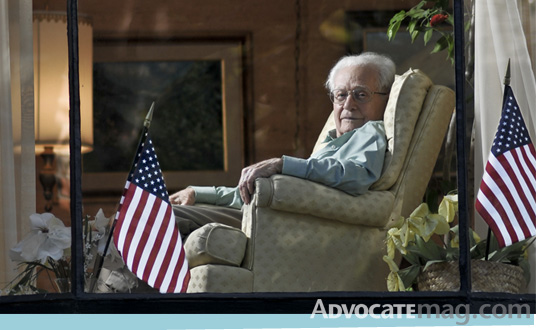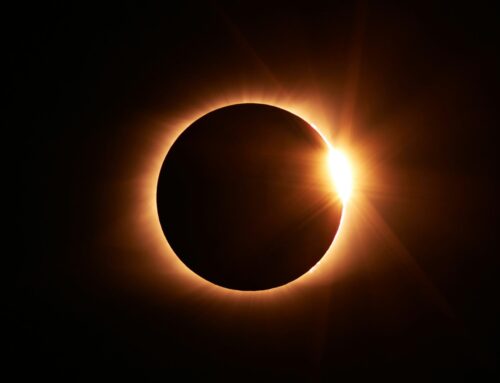What it means to be part of The Greatest Generation
We wait alongside them in the grocery checkout line and hurry past them on the street. They are members of our churches and grandparents to our children, but how often do we pause to ponder the content of their lives?
As teenagers and 20-somethings, they traveled to distant countries, knowing they might die there, and returned to lives forever altered by their experiences. They risked their lives, left jobs, and cast passions and aspirations aside until their missions were fulfilled.
Indeed, all who served in World War II — in battle or supporting roles — deserve unyielding gratitude, but as each Veterans Day passes, the time for thanks dwindles. We can still shake their hands and hear their stories, but for how much longer?
According to the U.S. Department of Veterans Affairs, the ranks of World War II vets are shrinking by about 1,200 a day nationwide.
A few of those who have retired in Preston Hollow take time to recall, for those of us who weren’t there, an era that shaped the world.
If you run into one of them today, it might be the right time to say “thank you”.
“I didn’t think I was coming back. I thought I had a 1 percent chance.” — Sam Kogutt
Sam Kogutt sat with his family at the kitchen table and listened as the news transmitted over the radio. Pearl Harbor had been attacked. Kogutt hadn’t even turned 16, but he had already made his decision.
“I knew right then and there that I would be in the Army,” he says.
And he’d get there as soon as he could. After enlisting at age 17 during his senior year of high school, the Army placed him in the Reserves until he turned 18. To go overseas, he had to turn 18 by the Dec. 1 cutoff, and Kogutt’s birthday was Dec. 9, so he asked his commanding officer if he could be deployed early.
“He said, ‘No, you’ll go soon enough.’ He probably saved my life.”
In March 1945, Kogutt landed in Le Harve, France, with the 97th Infantry Division, moving east into Germany. The mission: clear enemy territory south of the Ruhr River. Kogutt will never forget the battle at Siegburg, where his unit lined up behind the levees to cross the Sieg River.
“The Germans knew we were there. They dropped mortar shells up and down the levee and got a lot of our guys. I was covered in dirt. That was as close as I’ve ever been to death. Right there, I had a talk with the man up above.”
His division captured Siegburg along with its final objective, Düsseldorf, where soldiers set up a command post and prepared to move into Czechoslovakia. Along the way, the division liberated a concentration camp in Flossenburg, rescuing about 2,000 sick prisoners and finding countless corpses. Kogutt’s company arrived afterward.
“I went into the main office,” he says. “My commander wouldn’t let me go any farther.”
The experience hit home for Kogutt, a man of Jewish faith. Only decades later would he discover the amazing connection between that event and another Dallas resident.
He arrived back in the States in June on the U.S.S. Brazil for a 30-day furlough and was reunited with his family — something he never expected to happen.
“I didn’t think I was coming back. I thought I had a 1 percent chance.”
The soldiers then prepared to invade Japan, leaving on a ship from Seattle. Kogutt laughs because he still remembers the song that played as they departed, “Gonna take a sentimental journey …”
But before they left, the soldiers received word that U.S. forces dropped an atomic bomb on Hiroshima and, three days later, Nagasaki. The war was over. If not for that, Kogutt says, “there wouldn’t be a chance I’d be talking to you today. A whole generation of American men would have been wiped out.”
His division continued on to Japan as an occupation force during fall 1945.
After his Army days, Kogutt received a business degree from the University of Texas at Austin. After a few ventures, he settled in Preston Hollow, joined Congregation Shearith Israel and owned DART Manufacturing Co. He retired in 1999.
One year, Kogutt’s grandson took a trip overseas to experience Israel’s Independence Day and visit former concentration camp sites in Europe. The trip is an annual expedition for students at Yavneh Academy, an orthodox Jewish high school in our neighborhood. Kogutt later read a story published in the Dallas Morning News about the areas the teenagers visited.
“The last one listed was Flossenburg,” Kogutt says. “I couldn’t believe it.”
He contacted a Holocaust survivor mentioned in the story, Max Glauben, who accompanied the students on the trip. The two met over lunch at a local deli and later spoke during a Veterans Day presentation at Yavneh Academy.
“After I spoke about my experiences, Max got up and said, ‘His division liberated my camp.’ He and I have been friends ever since.”
“We were liberators back then.” — Fred Wiedemann
While soldiers in the Army, Air Force and Marines endured weeks of intense boot camp, Fred Wiedemann pored over textbooks for months, studying for the rigorous exam required by the United States Naval Academy.
“They were laughing at the amount of physical work we had to do,” Wiedemann says.
But he had always dreamed of making it to Annapolis, ever since he saw the 1937 film “Navy Blue and Gold”, starring Robert Young and James Stewart.
“It sounds silly, but it struck my heart. I decided I wanted to go there.”
Six months after the surprise attack on Pearl Harbor, 18-year-old Wiedemann passed up a Cornell scholarship and joined the Navy. He still remembers his number, 440879, reciting it like it’s his telephone number.
He took speed-up courses, which crammed four years of training into three, covering everything from electrical engineering to navigation.
“We didn’t get a day off for about three years,” he says.
After what he calls a terrible first year, Wiedemann ended up in the top 10 percent of his class. After graduating in spring 1945, he was posted to the Little Rock, a light cruiser equipped with guns six inches in diameter and 40-millimeter cannons. And so began his life at sea.
“Navy life was a very attractive lifestyle for many people,” Wiedemann says.
But it required a strict regimen.
“We were under watch-on, watch-off — four hours on and four hours off, day and night. Someone could snap their fingers, and I could fall asleep or wake up. I loved it. I enjoyed Navy life, even though it was tough. We were a happy-go-lucky bunch.”
Fortunately for Wiedemann, the atomic bomb ended the war in the Pacific before his ship made it to the invasion. He describes the energy onboard as “exuberant”.
“It was a very happy occasion. They knew they were going home.”
After the war, the Little Rock sailed the coast of South America and was the first U.S. Naval ship to sail around the treacherous Cape Horn since the Spanish-American War.
“It can get terribly rough down there,” Wiedemann says. “At the end, our ship rolled a lot — the maximum you can roll without tipping over.”
The sailors continued on to the North Sea to monitor Russian submarine passages between Greenland and Iceland. Later, they made goodwill visits to Brazil and other smaller South American countries.
Wiedemann eventually chose family life over Navy life and resigned his commission in 1947. He went into the insurance business, moved to Preston Hollow in 1952, and helped develop the Royal Northaven neighborhood, where he has lived with his wife ever since.
After visiting nearly 30 foreign countries throughout the Mediterranean, Baltic and Atlantic regions during his time in the Navy, Wiedemann spent the rest his life traveling the globe.
“We were liberators back then. It really was a lot of fun. It whetted my appetite for a lot of world travel.”
“You did things more in a hurry back then because you didn’t know what your future was going to be.” — John Sutherland
John Sutherland was serving as an Army Air Force mechanic, stationed at Seymour Johnson Field in Goldsboro, N.C., where he worked on B-25s and trained American and French combat pilots. (The Air Force became a separate branch of the Armed Services in 1947; until that point, it was part of the Army’s Air Corps and collectively known as the Army Air Force.)
Sutherland first noticed Bea at a USO dance.
“I always loved to dance. She had on a black skirt, a white blouse and a bright red belt — that caught my attention. She was always dancing with someone. I had to keep cutting in. I asked her for a date for the next day.”
After a six-week courtship, he proposed.
“She said she had to think about it,” he says with a smile.
The two appeared in “Love Stories of World War II,” compiled by CNN’s Larry King. Published in 2001, the book profiles different couples and what it was like to be in love during a time of such uncertainty. Some stories are filled with romance, while others end tragically.
“People were leaving, and you might get killed,” Sutherland says. “You did things more in a hurry back then because you didn’t know what your future was going to be.”
He married Bea shortly before leaving for Riverside, Calif., where soldiers were preparing to invade Japan.
“I wrote her just about every day while we were apart.”
Fortunately, their story had a happy ending after the atomic bomb was dropped, and Sutherland never saw combat. He retired in 1965 as a lieutenant colonel, and went to work for Sun Oil Company, settling in Preston Hollow. He and his wife were married for nearly 60 years and traveled the world together, visiting all 50 states and 72 countries. She died of cancer eight years ago.
“We had a nice life,” he says. “I can’t complain.”
When King’s book came out, Sutherland bought several copies, and gave them all to his family as Christmas presents.
“And I said, ‘In case you’re interested, look on page 77.’ That’s the first they had heard about it.”
He has one daughter, four grandchildren and nine great-grandchildren. Two of his three grandsons joined the military. One brought home an American flag that flew during a mission in Iraq; the flag now sits in Sutherland’s dining room.
“I’m quite proud of what they’ve done. I guess I’ve been lucky all my life.”
Read about the Honor Flight of Dallas, an organization that aims to give veterans an all-expense paid, overnight tour to Washington, D.C., to see the National WWII Memorial.









